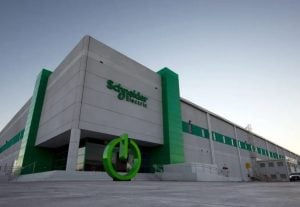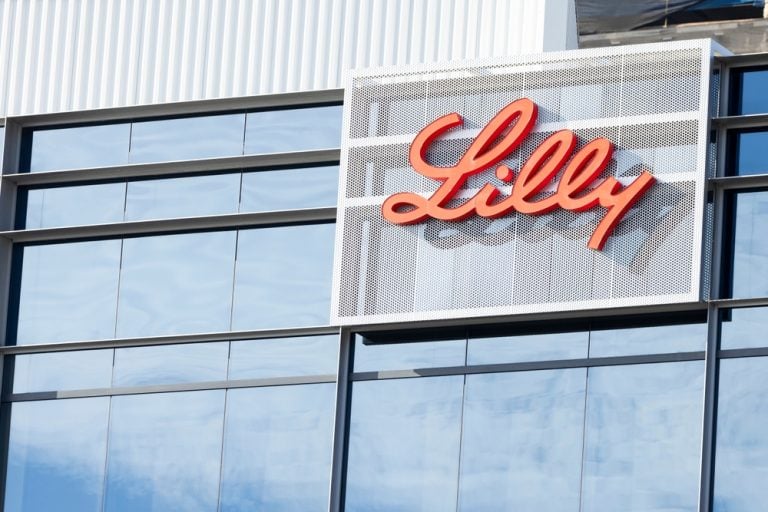King Energy looks to list Q1 2024 with the goal of progressing its 3H – hydrogen, helium and hydrogen – strategy
First objective post IPO is the drilling of Richie gas-condensate field in Louisiana for early cash flow
Infill seismic will then be shot over Alinya 3H target to optimise well location
Concurrently, drilling will be carried out to test the South Krotz Springs oil project
It is rare for companies to pursue hydrocarbons, helium, and hydrogen simultaneously as conditions must be just right for them to be found in the same reservoir. Enter King Energy.
Hydrocarbons, or more specifically methane (natural gas) is valued as an energy source and has the reputation for being the cleanest fossil fuel when burnt.
Besides being burnt directly for heating or fuelling both baseload and peaking power plants, methane is also used to produce paints, plastics, and fertiliser.
Natural hydrogen – hydrogen found in naturally occurring reservoirs rather than produced by cracking water or methane – is an alternative clean, carbon free fuel.
Helium an extremely rare, high value gas used in things like semiconductor manufacturing, nuclear energy production, solar panels, optic fibre and the cooling of superconducting magnets in MRI scanning machines.
Because of its scarcity and irreplaceable uses, helium can be worth up to 250 times more than natural gas of the same volume depending on its purity.
Current US short-term contract and spot pricing is between US$450 ($710) and US$3,000 per thousand cubic feet (Mcf) depending on its purity (98% to 99.999%).
All three, in one place
While hydrogen is more often produced either through cracking methane – or more recently water – into its component molecules, it can also be found occurring naturally in reservoirs that typically host natural gas (and helium).
However, the conditions must be just right.
Speaking to Stockhead, King Energy non-executive director Richard King said there were several pre-requisites that need to be met before 3H (hydrocarbon, helium and hydrogen) could be found in the same reservoir.
“Salt is a critical element in the 3H strategy as it is the most effective seal for containing all three molecules. Helium and hydrogen are very small, highly diffusive molecules and salt has proven highly efficient in trapping both” he said.
“The second key requirement is highly radiogenic granites. Preferrable these would be in direct communication with reservoir sands for ease of gas migration.
“The natural radioactive decay of such granites releases helium and simultaneously creates hydrogen through the radiolysis of reservoir water.”
Continuing to expand foothold positions in basins that meet these criteria is central to the company’s strategy.
King noted that helium is very valuable due to the combination of supply scarcity and high demand.
“It is a high value market and we see it continuing to grow over the short, medium and long term,” he said.
He adds that while there’s a lot of discussion about the hydrogen value chain and the most economical way to generate hydrogen in a “circular hydrogen economy”, the company believed that natural hydrogen found in reservoirs would likely have the lower cost of production.
Natural gas also remains valuable as it provides “ energy at the lowest possible cost”.
“Everyone needs access to affordable reliable energy, whether electricity to keep households lights on, for manufacturing, transportation, and the mineral resources sector. Affordable reliable energy is a simply fundamental for maintaining and improving living standards” King said.
“We see that ensuring a supply of abundant low-cost gas and oil is an absolute and critical part in allowing long term sustainable and affordable technical and economic solutions for the energy transition..
“The 3H strategy combines to create immediate and long term value for shareholders from the exploration, discovery and production of hydrocarbons, value from associated helium discoveries and supporting in the medium and longer term, the creation of hydrogen production and storage for a circular economy.”
Alinya: King’s “company-making play opener”
Alinya project prospects compared to notable, existing fields. Pic: Supplied.
King Energy’s flagship is the Alinya project in South Australia’s Officer Basin.
“Alinya is King’s company-making play opener. It is about 20,000km2 in two permits, PEL 81 and PEL 253, about 150km west of Coober Pedy from the Stuart Highway,” King said.
“There have been wells drilled there as recently as 2013, so we know we can get access to the area and get rigs in for the purpose of drilling.
“We have land access arrangements in place with the traditional owners. We have completed the technical basin studies and analysis and 2D seismic mapping of multiple leads and prospects.”
The Officer Basin contains Neo-Proterozoic-aged petroleum systems which have proven prolific elsewhere such as Oman and The Urals, and also in Australia’s Amadeus Basin.
Importantly for the company, all of the necessary elements needed for a successful 3H discovery – the reservoirs, seals and radiogenic basement rocks – are present in the basin.
Work carried out to date has identified three top-ranked prospects – Rickerscote, Milford and Milford East.
“Rickerscote will be the first prospect to be drilled and the current plan is to acquire 250km2 of 2D seismic across it for the purpose of optimising the drilling location,” King said.
“It is drill-ready now, but because we have three reservoir-seal pairs we want to hit with the first well, we need want to make sure we are as crestal as possible at each.
“We will acquire the infill seismic and have that processed and interpreted during 2024 to support drill in 2025.”
The Rickerscote prospect is a ~180km2 structure amongst the largest undrilled seismically defined three-way dip closures onshore Australia.
“High side case is the company is looking at about 4 trillion cubic feet of gas and 600MMbbl of oil while the mean success volumes are in the range of 1-1.5Tcf and 100-200MMbbl. These volumes can be readily commercialised, ,” King said.
These figures do not include helium or hydrogen, which will displace some of the hydrocarbons though the value of helium more than makes up for it.
Additionally, the planned well is expected to be relatively shallow – intersecting the shallowest reservoir-seal pair at about 1,200m and having a basement depth of about 2,000m, meaning that it should be fairly inexpensive and quick to drill.
“From a location perspective, we very much see the Officer Basin as being strategically located to supply energy to the east coast and northern Australia,” King said.
“It can access the east coast through the Moomba pipeline hub, which can take gas to Queensland, New South Wales, Victoria and South Australia. That’s about 650km as the crow flies from future field production and processing infrastructure located at site, but that’s a relatively short pipeline compared to Australian standards.”
Targeting cash flow first
Location of the Richie-1 discovery well. Pic: Supplied.
While the 3H strategy is very much at King Energy’s core, the immediate focus is cash flow from the Richie field in Louisiana.
“Richie is a discovered gas-condensate field in Louisiana with deeper reservoir potential. The cash flow from early production will support King’s ongoing exploration expenditure on our cornerstone 3H project in the Officer Basin,” King said.
“The shallow reservoir has been discovered and tested in the 1950s. The deeper reservoir has been proven in adjacent areas, just not proven in our lease at the moment.
“Our battle plan is to drill an appraisal well to test the lower reservoir. This will subsequently be completed as a production well in the upper discovered reservoir to bring on production immediately.
“It is low cost, we will have the well drilled within three months of capital raise, and on production a month or two later, for a total cost less than US$5m.”
The core Richie gas field has gross, mean prospective resources of 8.4 billion cubic feet of gas and 500k barrels of condensates, this generates compelling economics and significant free cashflow. Extensive upside potential exists in the Richie East fault block.
This low cost of drilling and development is due to the company needing to install only minimal dehydration and condensate stripping facilities, storage tanks and a truck loading facility as well as short gas spur line to the Eastern Texas gas pipeline a mile away.
It will also benefit from the high availability of skilled personnel, drill rigs, equipment and pipeline.
“As soon as the capital raise is done, we will be on the ground getting that ready to be drilled,” King said.
One more arrow in the quiver
King Energy has a third project that can add further value.
The South Krotz Springs oil exploration play in Louisiana has been covered by 3D seismic which have generated drill-ready targets.
While the project itself is undrilled, it is sandwiched by producing discoveries to the north and south.
“The field to the north, which is the Fordoche field, has produced 70 million barrel from the same reservoir”King said.
“The reservoir is proved, the charge system is proved, and the trapping geometry that we have is identical to the tapping geometry that worked at the Fordoche field.”
In the event of success, South Krotz Springs gross mean volumes have been assessed at 7MMbbl of oil and 4Bcf of gas.
While the well is fairly deep with a planned depth of about 4,600m, its location in Louisiana grants it the same benefits as Richie, meaning that it can be drilled and brought into production quickly thanks to its proximity to infrastructure.
South Krotz Springs is just 10 miles to the closest tank farm and refinery and about 800m to the Eastern Texas gas pipeline.
King says that drilling is expected to cost about US$10m, which is why the company is prioritising the drilling of Richie at low cost and rapid production.
Additionally, should the well be successful, there is plenty of follow-up potential prospects.
King Energy’s indicative project schedule. Pic: Supplied.
Management and listing
With a full portfolio of highly prospective projects, King Energy also has a strong board to go with it though the directors are predominantly non-executive at this stage prior to the IPO.
“Going forward, we will be appointing Dr Agu Kantsler, as the non-executive chairman at the IPO,” King said.
“Agu is one of the most respected oil men in Australia. He was previously the head of global exploration at Woodside Energy.
“He has plenty of experience, most recently he has been on the Oil Search board prior to the acquisition by Santos. He is also a NED for Central Petroleum.
“He has a world of experience technically and commercially to support the delivery of the work program we currently have, and opens up expansive growth opportunities for the company.”
The other directors are Stuart King, a proven oil finder with more than 25 years’ of technical experience across exploration and development as well as Matt Hansen who also serves as Pantera Minerals’ (ASX:PFE) chief executive officer.
Richard King himself has more than 28 years’ of experience as a proven executive and senior manager in exploration and production as well as the wider energy industry. Most recently, he was Head of Country for KUFPEC, and previously held manager roles with Otto Energy, Chevron and Woodside.
“We are looking to raise $10m to $15m,” King said.
“Those funds will be used for development of Richie gas field in Louisiana.
“It also allows us to get on with a comprehensive seismic program over the Officer Basin, which could be up to $3m, well planning and drilling approvals for the Officer basin, and cost contribution ultimately to South Krotz Springs project.”
This article was developed in collaboration with King Energy, a Stockhead advertiser at the time of publishing.
This article does not constitute financial product advice. You should consider obtaining independent advice before making any financial decisions.
The post IPO Watch: King Energy says its ‘3H’ Strategy – hydrocarbon, helium and hydrogen – is a company maker appeared first on Stockhead.





















+ There are no comments
Add yours